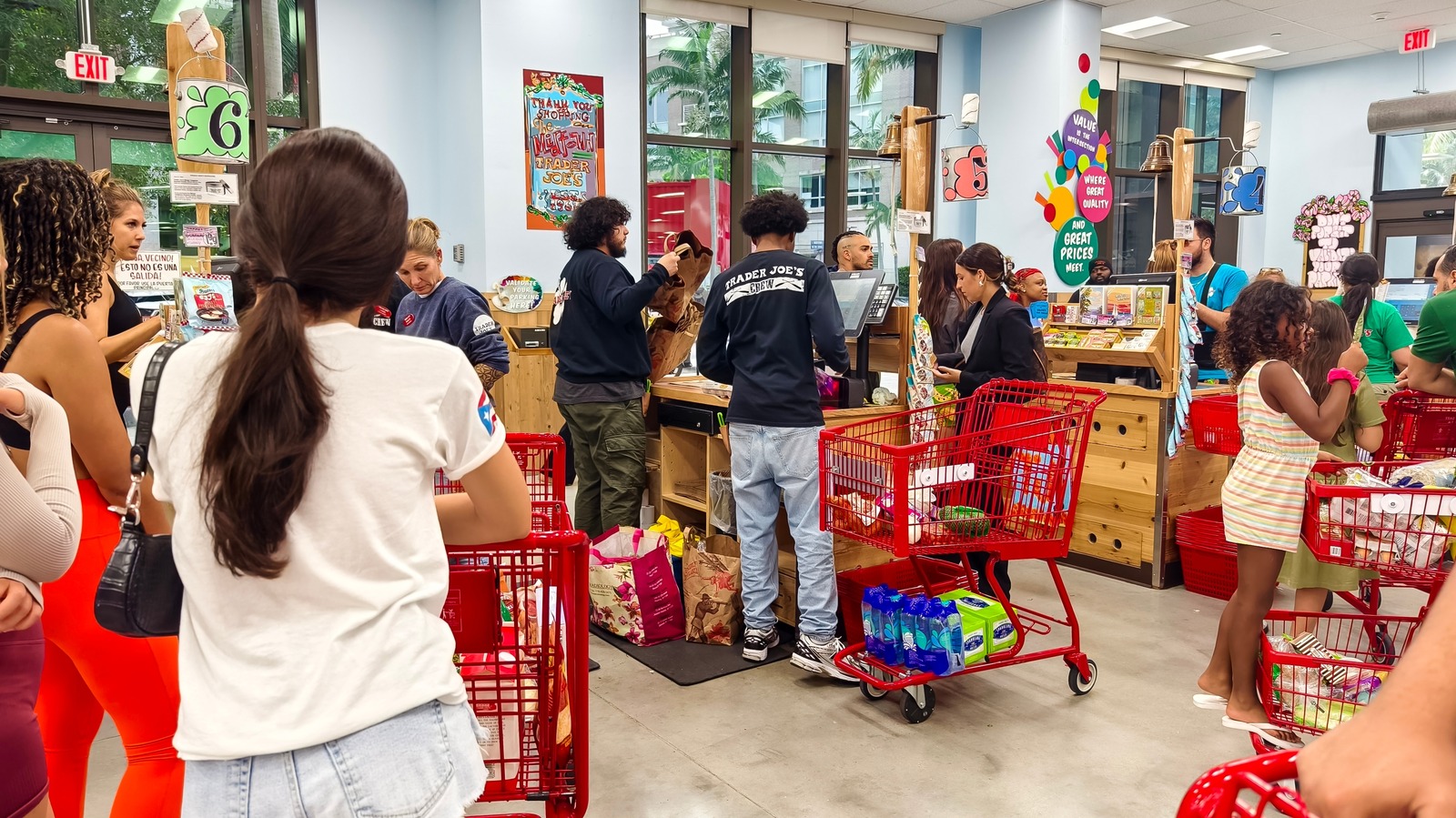Travel
How to Travel for Vacation Races from a Frequent Flyer Triathlete | Well+Good

I have been competing in Ironman triathlons, where you swim 1.2 miles, bike 112 miles, and run 26.2 miles in one day, for nearly 10 years. Ironman races take place around the world and I’ve completed 13 of them, including making my age group podium 9 times and attending the Ironman World Championships in both Kona, Hawaii, and Nice, France.
For both Ironman and shorter-distance triathlons, I end up taking more than 30 flights a year to compete. I like to think I’ve gotten pretty good at handling the bumps along the way—including how to arrive at my destination feeling as fresh as possible. In fact, I wrote this article from an AirBnb in Nice, France, as I prepared to race in the 2024 Ironman World Championship.
And I’m not the only one who goes to destination or vacation races: Competitions all over the world see thousands of people fly in. More than 4,600 athletes flew to London from the U.S. last year to run the London Marathon, and more than 650 people made the trek from Australia. The women’s Ironman World Championship had 65 countries represented this year, with North American athletes making up 36% of the nearly 1,500-athlete field.
Clearly, a “racecation” is indeed a thing. But unlike traveling for a pure vacation, traveling to a race or competition comes with a unique set of stressors: packing the right equipment, maintaining your preferred diet, and ensuring your mind and body are ready for the day of the event. This can be difficult when traveling is already a lot to manage physically and mentally.
These are my top travel tips for vacation races, so that you can take all the right steps to make sure you are as ready as possible to hit the ground running (literally) once you land.
1. Wear compressive clothes
While it may be tempting to wear your loosest, most pajama-like clothes when taking a multi-hour trip, that outfit isn’t the best choice for athletic performance.
Instead of loose loungewear, opt for compressive clothing, including compression socks. Compressive clothing can prevent muscle and joint swelling from travel and will help with blood flow, both of which are key to making sure your body feels well enough to compete. I notice that my ankles, calves, and hamstrings feel much better getting off a flight when I’ve worn compression clothes.
Two of my favorite items are tall compression socks from CEP and leggings from compression apparel company 2XU. I wear both on nearly every flight I take to a race, and as a bonus, both keep me warm in those chilly airplane cabins.
2. Take self-care seriously
Part of being ready to compete is having a good headspace before and during the big day. A little bit of self-care goes a long way when traveling to a competition. Feeling well-rested, mentally calm, and not covered in what I call “travel grease” can make all the difference.
I used to only take tiny earbuds with me when I traveled, but most of those are not noise-canceling, so I would be subjected to the background noise of others’ conversations, babies crying, or airplane staff attending to other passengers, all of which limited my ability to sleep and relax en route to my destination.
Now, I take noise-canceling headphones with me on every trip, especially via plane. I personally use Sony-brand headphones, but any quality noise-canceling headphones work. They are an investment, with most in the $300 range, but if you are easily bothered by extraneous sounds, these will ensure you can get into “race mode” with few distractions.
I also bring an eye mask with me on every flight. I typically sit in an aisle seat which means I do not have control over the window shade, so being able to cover my eyes when I want to get some shuteye is critical. I use an eye mask I got during a flight upgrade, but I’ve also heard great things about Manta eye masks.
And just because you are traveling doesn’t mean you can’t maintain your preferred hygiene habits. Packing a small dental care kit with a single-use toothbrush (I like the Colgate Wisps), some floss, and airplane-sized mouthwash brings me a lot of comfort. I also always pack a few Klean Freak body wipes to give myself a mini face scrub. The peppermint and tea tree scents make me feel like I’m at a spa even when I’m actually sitting at a grubby airport gate!
3. Be thoughtful about hydration and nutrition
When traveling for a competition, it’s unwise to change up your diet too much beforehand. The last thing anyone wants is a stomach ache or gastrointestinal distress before or during their big event.
I never plan on relying solely on the food at the airport or on the plane—or even at my destination! There are a few products I know I need to pack so that I get enough electrolytes, fiber, and protein before my races.
- Skratch Labs individual hydration packets: I like the products from Skratch Labs—and even use them during my triathlons—because they are made from real food and aren’t too sweet. I’ll pack upwards of 10 individual packets to use on the plane and at my destination so that I can ensure I am getting enough electrolytes before a race.
- Polar Bottle or Bivo water bottles: Plan on packing your own reusable water bottle so you don’t need to purchase an over-priced single-use bottle at the airport. I like these as they’re fairly indestructible and keep beverages reasonably cold.
- Precision Fuel & Hydration tablets: I also like Precision Fuel & Hydration’s electrolyte tablets because they are extremely light on flavor and are also effervescent, which can be a nice change from drinking a still water.
- Misfits protein bars: I am extremely particular about protein bars as I hate the chalky aftertaste that so many leave you with. I like Misfits because they are satiating, not chalky, and are vegan, too. No matter what protein bar suits your fancy, I recommend packing a few so that you can eat something that will fill you up instead of relying on carbs and fats, which tend to be more common at airports and on planes.
- Dried fruit: No one really likes to talk about this topic, but maintaining regular bowel movements when traveling can be extremely stressful—even more so when you have an athletic event coming up. I like to bring some dried fruit with me when I travel for races because the fiber in dried fruit often helps keep my trips to the bathroom regular and is less risky than taking a laxative. Just make sure you don’t eat an entire bag of dried fruit in one sitting—that can have the opposite effect.
4. Move whenever possible
Traveling can be tiring and it may be tempting to sit whenever a chair presents itself, but this can be your worst enemy on a long journey for a vacation race.
Staying seated for too long can cause your hip flexors, hamstrings, and low back to tighten and become stiff, which is not ideal for any athletic endeavor.
Even when at an airport gate, walk around and don’t be afraid to do some stretches or dynamic movements like lunges or squats before boarding your flight. I do this all the time, and while I may have gotten an odd look or two, very few people notice or care.
When I take long-haul flights, I make it a priority to walk up and down the plane aisles a few times every couple of hours or so. I also do calf pumps at my seat (flex your feet down and up) to keep the blood flowing through my lower legs.
Some people take this to the next level and will even run up and down the airport terminals to keep their pre-race prep on track. If it floats your boat, go for it!
Of course, eventually settling down for some sleep or to eat is to be expected, but in between flights or when you’re feeling up for it, make sure movement remains a priority.
5. Set your expectations accordingly
As good as these tips may be, there is no way to get around the fact that traveling is hard on the body and mind. There are so many physical and mental stimuli that it can be hard to tune all of them out, even for the most seasoned traveler.
When possible, I plan on arriving at my racecation destination a few days ahead of my competition so that I can take a day to nap, get my bearings, and get back on track with my nutrition and hydration plans.
And remember: It’s normal to feel not-so-great for a day or so after traveling. Give yourself grace and try to plan a nap and time for a few good meals into your pre-competition schedule.
Apps like Calm or Headspace offer great travel-related meditations to help mitigate the exhaustion you may feel as a result of your journey. Additionally, they offer lovely bedtime stories to help you fall asleep. I bring my mini white noise machine with me on every race trip I take. The machine makes any hotel or AirBnb feel a little more like home.
There is no way to totally eliminate the effects of travel on your psyche, muscles, and joints, but it is entirely possible to mitigate how tired and anxious you feel. With a little extra planning and care, you, too, can arrive at your destination ready to set your next personal best.
Our editors independently select these products. Making a purchase through our links may earn Well+Good a commission.









